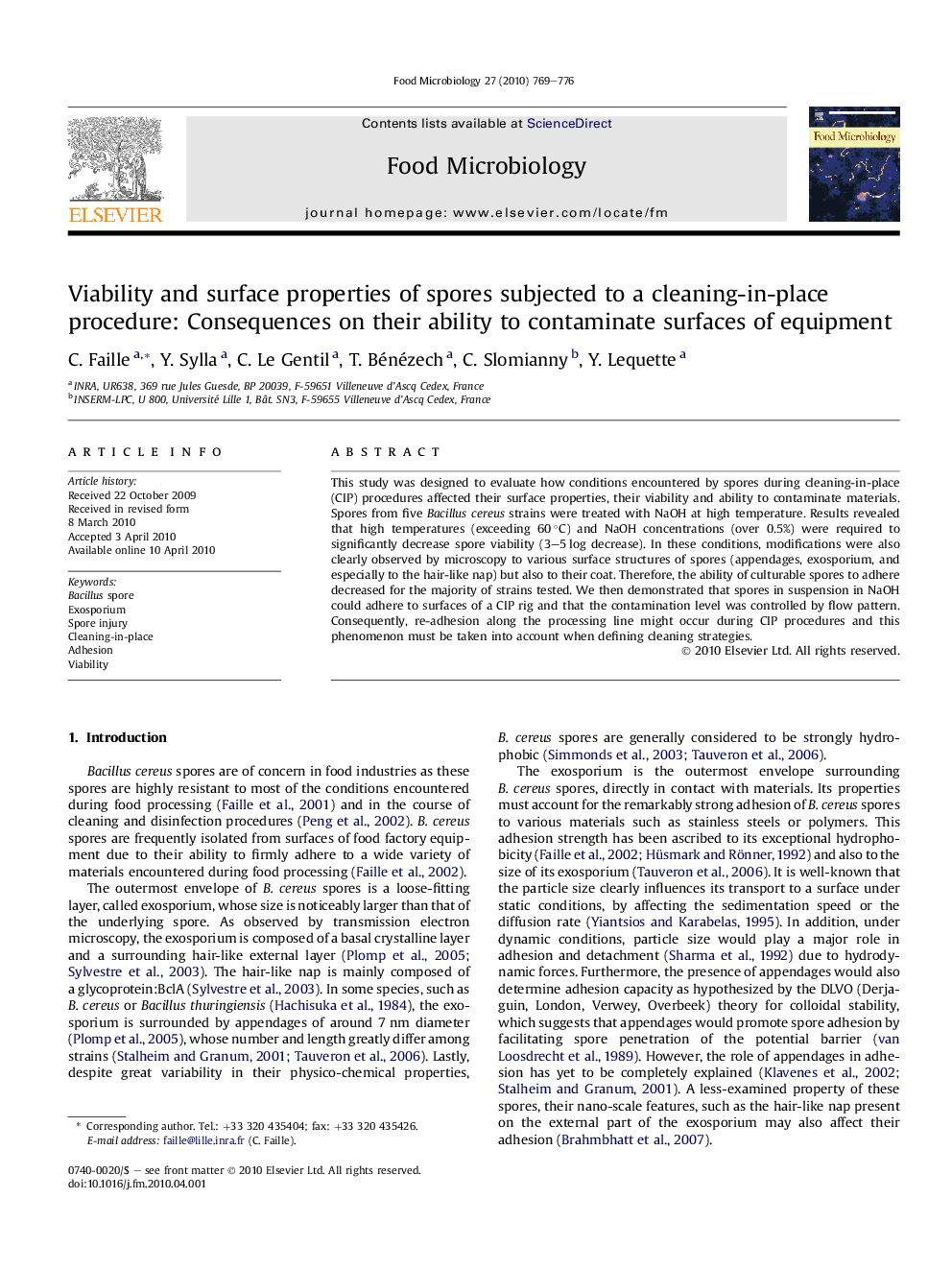| Article ID | Journal | Published Year | Pages | File Type |
|---|---|---|---|---|
| 4363387 | Food Microbiology | 2010 | 8 Pages |
Abstract
This study was designed to evaluate how conditions encountered by spores during cleaning-in-place (CIP) procedures affected their surface properties, their viability and ability to contaminate materials. Spores from five Bacillus cereus strains were treated with NaOH at high temperature. Results revealed that high temperatures (exceeding 60 °C) and NaOH concentrations (over 0.5%) were required to significantly decrease spore viability (3-5 log decrease). In these conditions, modifications were also clearly observed by microscopy to various surface structures of spores (appendages, exosporium, and especially to the hair-like nap) but also to their coat. Therefore, the ability of culturable spores to adhere decreased for the majority of strains tested. We then demonstrated that spores in suspension in NaOH could adhere to surfaces of a CIP rig and that the contamination level was controlled by flow pattern. Consequently, re-adhesion along the processing line might occur during CIP procedures and this phenomenon must be taken into account when defining cleaning strategies.
Related Topics
Life Sciences
Agricultural and Biological Sciences
Food Science
Authors
C. Faille, Y. Sylla, C. Le Gentil, T. Bénézech, C. Slomianny, Y. Lequette,
